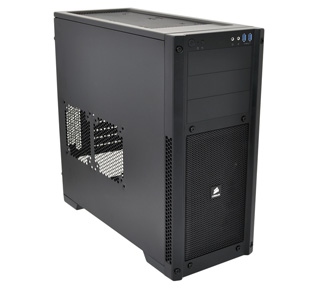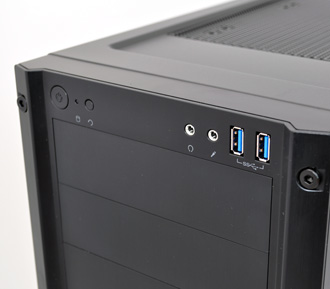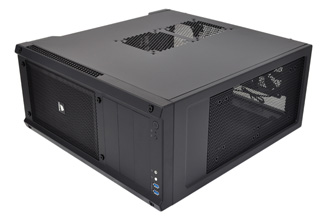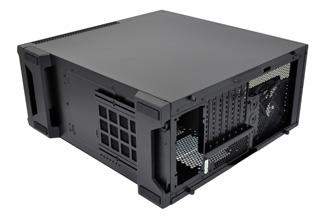Introduction
There's a good chance you're eagerly anticipating a review of the Obsidian Series 550D, but that supposedly-quiet mid-tower case is still somewhere across the Atlantic, so we're turning our attention to Corsair's other new attraction; the Carbide Series 300R.
And perhaps with good reason. The 300R is Corsair's cheapest-ever chassis at under £60, and that characteristic alone should have kept the latest Carbide out of the shadow of the bigger, badder Obsidians.
£60, folks. On the face of it, the Carbide Series 300R can't go wrong. If previous Corsair enclosures are anything to go by, this should be a wealth of high-end features for only half-a-dozen £10 notes.
But meeting this lower-than-ever price point isn't an easy task, and it is a considerable drop. The original trendsetting Obsidian 800D still fetches over £200 at retail, the gorgeous white Graphite 600T costs almost £140, and even Corsair's second-cheapest option - the Carbide 400R - will set you back the best part of £80.
So what's been sacrificed to meet the new budget? To start with, size. Whereas most previous Corsair enclosures have been formidable in stature, the 300R is relatively compact at 485mm in height and 450mm in depth. That makes it smaller than a SilverStone Temjin Series TJ04-E, but not any less potent - Corsair still markets the new Carbide as "a great choice for building powerful PCs."
To that end, a pair of USB 3.0 ports feature as standard, and the number of visible vents hints at some serious airflow potential.
There are a total of seven fan mounts scattered throughout the chassis; two 120/140mm front intakes, two 120/140mm top exhausts, two 120/140mm side intakes and a rear 120mm exhaust. Six 140mm fan mounts is impressive for a chassis of this size, but most of the aforementioned fans are optional. Out of the box, Corsair provides just two fans as standard; a front 140mm intake and a rear 120mm exhaust.
Airflow doesn't appear to have been compromised by the smaller confines of the 300R, but there are a few downgrades elsewhere. The chassis provides only seven expansion slots (one less than Corsair's usual complement of eight), there are just three 5.25in optical drive bays (compared to four on the Carbide 400R) and the number of internal storage bays is restricted to just four (the Carbide 400R offers six).
Still ample for most users, we reckon, and the 300R does have the benefit of looking good. Corsair's all-black finish is attractive, and without any bulging side panels, we'd argue the 300R is smarter in appearance than its 400R and 500R siblings.













